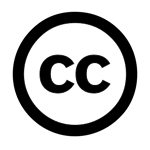Carly Finseth is a PhD student in Technical Communication & Rhetoric at Texas Tech University. She has taught first-year composition at both Clemson University and at Texas Tech University, and is currently investigating how to teach an introductory technical communication course as a game. In 2011 she won Clemson University's Thomas E. Douglass Teaching Award for Excellence in Teaching. Her research interests include teaching writing, online education, gaming studies, knowledge creation through play, usability, and open source technologies and culture.
What is "Open Source"?
Open source is about culture and community, and also about property, such as redefining ideas of authorship and ownership (Weber 2004). In a true open source community, there is very little ownership in the traditional sense of the word. Each participant is able to add his or her own unique touch or approach to the problem at hand, but rarely is there a need for the designer to insist on individual ownership rights. Instead, the open source product is continually in flux, always being changed and modified to suit the needs of individual users. Thus, an open source creation is owned by many – a community – and is able to serve many as well.
The traditional sense of "open source" relates to computer software. If a piece of software is open source it means that the source code – the raw data behind the product – is made available to the public to access, modify, and redistribute. The hope is that many talented programmers will come together to contribute to a software product and make it better, thus eliminating bugs and streamlining the entire product for everyone. This does not mean, however, that open source community members see "open" as "free." On the contrary; as Weber puts it: “Programmers often explain it with simple shorthand: when you hear the term free software, think ‘free speech’ not ‘free beer’” (Weber 2004, p. 5). Thus, much of the ideology behind the open source community is the act of freedom, of being able to access, recreate, and redistribute creative works to the general public.1
Linux founder Linus Torvalds defines "open source" as the basic ideological concept that “Information… should be free and freely shared for anyone interested in improving upon it. But those improvements should also be freely shared” (Torvalds 1999, p. ix). It is this positive and collaborative, community-based activism that fuels most open source projects and communities. The overall ideology seems to be: You provide the expertise that you can and I’ll provide mine; we’ll work together for a common solution.
Open source participants and creators often see themselves as part of a greater good, usually in the form of solving some existing problem. An individual who composes and contributes to open source composition, such as programming code, sees herself as “an enthusiast, an artist, a tinkerer, a problem solver, and expert” (Raymond 1999, p. xii). This goes beyond notions of open source developers as mere programmers or computer experts and instead speaks to a greater source of motivation: an inherent need to remedy error or create positive change. As Shirky puts it, open source culture “is geek nirvana, where interest and innovation have more weight than profit or productivity” (“The Interest Horizons” n.d.). Again, this points to the underlying motivation inherent to open source communities: self-interest and engagement. Now aren’t those the same traits we wish to see in our writing students?
"Open" can mean many things, but for the purposes of this article, I intend for it to be used as a metaphor for opening up the dialogue between teacher and students, as well as between students themselves. Similar to Wells’s dialogic learning model (1999), "open" in this sense refers to broadening relationships between instructors and learners. But I wish for the definition to extend even further and focus on the relationships among students themselves. "Open" should be about community and collaboration, which may begin with some guidance from teachers, but ultimately will bloom within the relationships between writers. This article asks: What if we could design a composition space that allows for inventive freedom without judgment? What might that look like? What tools can we use to encourage invention in an "open source" composition space? How do we begin to "focus on the people" – and what might that mean? The first step to incorporating open source ideologies into the composition classroom is creating a safe environment for the first step of writing: a term I call "open invention."
1 Stallman (2009) argues that the term "open source" is problematic because of the common misunderstanding that it simply means that a user can access and modify the digital software code. Instead, he prefers the term "free software," which implies an overall freedom to access, modify, and use software for free (Stallman, 2009, p. 32). As a scholar of composition and rhetoric, I understand the value in debating terminology. However, for the purpose of this article I wish to move away from thinking of "open source" or "free software" as mere discussions of products and business economics. Instead, I'd like to borrow the phrase "open source" as a rhetorical and cultural means for understanding a new approach in composition pedagogy. In this sense, I'll be talking less about the monetary implications of "open" or "free" software and more about the cultural values that the systems behind such products allow.
<< Previous: Introduction
Next: Open Invention
